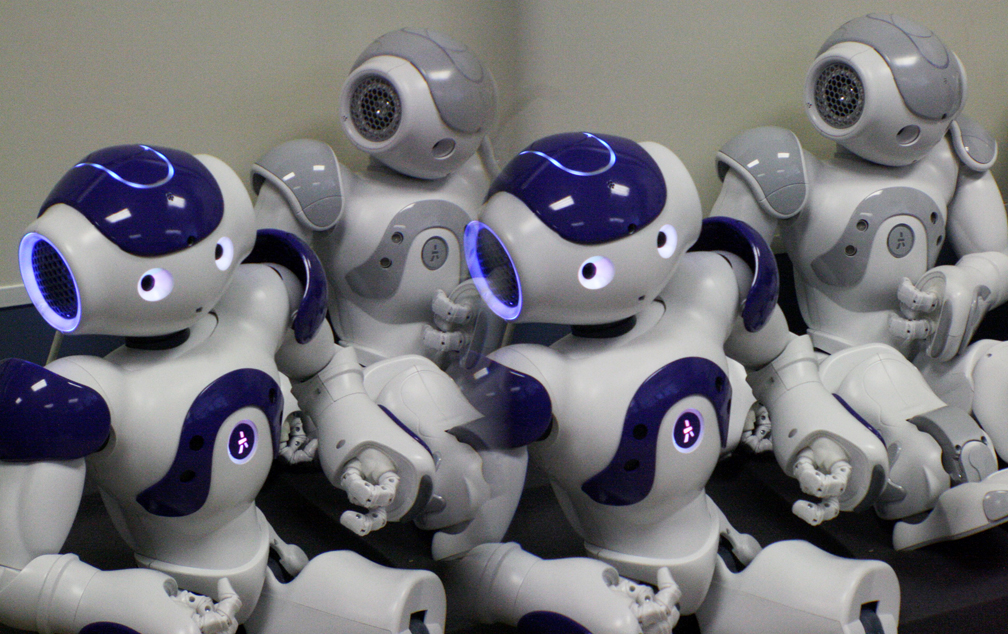Swedish News:
More Swedes are turning 100. Cute robot to take over education? Johansson no longer most common name.
-
 Move over Scarlett Johansson, yours is simply no longer the most common surname in Sweden. The name Andersson has surpassed Johansson. Scarlett Johansson’s father Karsten Johansson is a Danish-born architect, originally from Copenhagen. No Swedish roots as far as we can tell. Image source: Flickr/Wikimedia Commons
Move over Scarlett Johansson, yours is simply no longer the most common surname in Sweden. The name Andersson has surpassed Johansson. Scarlett Johansson’s father Karsten Johansson is a Danish-born architect, originally from Copenhagen. No Swedish roots as far as we can tell. Image source: Flickr/Wikimedia Commons -
-
More Swedes are turning 100
New statistics show that one in three Swedes will be 90 years old or older at the time of their death. Fifty years ago, only one in ten reached that age. More and more Swedes will also be able to put 100 candles on their birthday cake. According to calculations by SCB (Statistics Sweden), 11 percent of all Swedish girls, and 6 percent of the boys born in 2013, will live to be at least 100 years old. As a country, Sweden will reach the 10 million mark in population a year earlier than last year’s prognosis: by 2017. Never before has an increase in population of a million happened so fast, says SCB in a press release. The next million (that is 11 million) is expected to be passed in 2040, and in 2060 Sweden will presumably have reached a population of 11.6 million. SCB makes their population forecast prognoses once a year. Every three years, a more in-depth analysis is made, when SCB presents a main theme for the development as well as alternative projections. The latest in-depth analysis was done last year and concerned the 2012-2060 period. In between these analyses, follow-ups and revisions are made. The rapid increase in population is explained by huge immigration and baby booms. The big number of children born around 1990 makes for a continuous increase in births that will last to the beginning of the 2020s when the baby boom children themselves become parents. The number of immigrants is expected to be higher than the number of those leaving the country. Today approximately 15 percent of the Swedish population was born in another country. In 2060, 18 percent of the Swedish population is expected to be born outside the country. -
 A robot named Nao has been developed in order to help Swedish students ages 9 to 11 learn geography. The robot is similar to the blue and white ones above, but is instead orange and white and cut off at the waist. Photo: Kai Schreiber
A robot named Nao has been developed in order to help Swedish students ages 9 to 11 learn geography. The robot is similar to the blue and white ones above, but is instead orange and white and cut off at the waist. Photo: Kai Schreiber -
-
Cute robot to take over education?
Meet Nao, a robot who understands children. Scientists in Göteborg have developed Nao with funding from the European Union, and eventually Nao will teach Swedish children geography. “My daughter thinks he is cute,” says Wolmet Barendregt about Nao. Barendregt is a university teacher who, along with doctoral candidate Sofia Serholt, is responsible for the Swedish part of this EU project. Barendregt’s daughter is only 4 years old, so she is a bit too young to learn about the rivers in Halland, the capital of Spain and other geography lessons. But she is drawn to Nao nevertheless, and that’s a good start. The idea is not that Nao (who is white and orange) and other robots like him, are to take over teaching altogether while they are to complement teachers. “They aren’t supposed to become some sort of mechanical substitute teachers,” says Barendregt. Educational games and computers supporting students is nothing new, but Nao will bring teaching to a new level by “feeling” how kids are doing and figuring out whether they are learning. “They (the robots) are to understand whether a child feels stressed or nervous, for instance, and adapt accordingly,” explains Barendregt—just like a human teacher would, given enough time. And that’s the whole point with these robots. When time is at a premium for the teacher, the robot will step in. “They can be used individually or for small groups of students.” The robot is connected to an interactive tablet, much like a big reading tablet. It is about 40 centimeters tall (about 16 inches) with movable arms and head (there is no lower body). In Japan, experiments with a robot in the classroom have already taken place: Push the start button and the lesson commences. That’s not what Nao is about. -
 Can you fit 100 candles on a birthday cake? If not, it’s time to practice. More and more Swedes become centenarians, and also more and more Swedes are born outside the country.
Can you fit 100 candles on a birthday cake? If not, it’s time to practice. More and more Swedes become centenarians, and also more and more Swedes are born outside the country. -
Johansson no longer most common name
Take note: Johansson is no longer the most common Swedish surname. By a narrow margin, the most common last name in Sweden today is Andersson. The number of Anderssons has not increased, but there’s been a decrease in the number of Johanssons. On December 31, 2012, there were 251,621 people with the name Andersson, a decrease of 3,288 in one year. Johansson decreased by 3,710, to 251,494 people, according to SCB (Statistics Sweden). The Karlsson clan is still in third place. In fact, all last names ending in –son continue to dominate. You have to go all the way to the 17th place to find Lindberg. What about first names? Anna and Lars are still hands down the most common first names in Sweden. But if you count all given names together, Anna and Lars both come in in third place, following Maria and Karl. -
-
